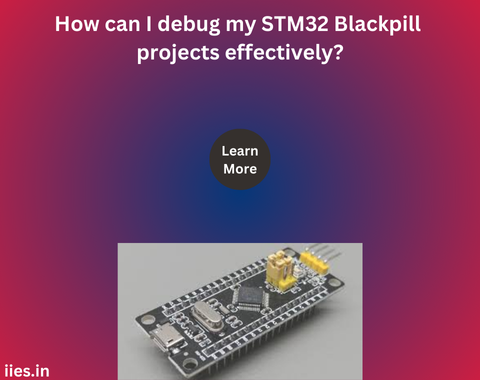
Debugging is a critical skill in embedded systems development, particularly when working with versatile platforms like the STM32 Blackpill. This compact yet powerful microcontroller offers extensive capabilities, but with complexity comes the challenge of identifying and resolving issues effectively. Here, we explore essential theoretical approaches to debugging STM32 Blackpill projects, focusing on strategies that enhance accuracy and efficiency.
Before diving into specific techniques, it’s important to establish a solid understanding of the debugging environment. The STM32 Blackpill, based on the STM32 microcontroller series, requires a suitable Integrated Development Environment (IDE) such as STM32CubeIDE or PlatformIO. These tools provide essential features like breakpoints, watch variables, and memory inspection, which are foundational for debugging.
Effective debugging starts with systematic error identification. This involves understanding the problem’s symptoms, whether it’s a program crash, incorrect data output, or unexpected behavior. By narrowing down the scope of the issue, developers can focus their debugging efforts on specific code sections, peripherals, or configurations.
Breakpoints are a fundamental debugging tool that allows developers to halt program execution at specific points. This enables a detailed inspection of variables, registers, and system states. Coupled with step execution, where the program is run line-by-line, breakpoints facilitate a deep dive into the program’s flow, helping to pinpoint the exact location and cause of errors.
Serial communication is a powerful tool for real-time diagnostics. By sending debug messages over UART or USB, developers can monitor the program’s behavior as it runs. This is particularly useful for understanding the flow of execution and the state of variables at different points in time, especially in situations where breakpoints may not be practical, such as in time-sensitive or interrupt-driven code.
For microcontroller projects, inspecting memory and peripheral registers is crucial. Memory corruption or incorrect peripheral configurations are common sources of errors. IDEs like STM32CubeIDE offer memory and register views, allowing developers to verify that memory is being allocated correctly and that peripherals are configured and behaving as expected.
Interrupts are integral to many embedded applications, but they can also be a source of subtle bugs, especially if priority levels and timing are not managed correctly. Analyzing the behavior of interrupts, checking their priorities, and ensuring they are not causing unintended side effects is a key part of debugging. Tools like interrupt tracing can be invaluable here, allowing developers to see exactly when and how interrupts are firing.
Sometimes, the best debugging happens before the code is even run. Regular code reviews and the use of static analysis tools can help identify potential issues such as memory leaks, buffer overflows, and logical errors before they manifest in the running program. These practices also promote a deeper understanding of the codebase, making it easier to spot and fix bugs during the debugging process.
Testing edge cases and simulating rare conditions is crucial for robust STM32 Blackpill projects. This includes simulating low power conditions, unexpected input values, or extreme timing scenarios. By preparing for these scenarios, developers can identify potential failure points before they occur in real-world applications.
Finally, continuous learning and proficiency with debugging tools are vital. The STM32 ecosystem is vast, and staying up-to-date with the latest tools, libraries, and debugging techniques can significantly enhance the debugging process. Engaging with the developer community, reading technical documentation, and experimenting with new methods are all part of mastering debugging on the STM32 Blackpill.
Debugging STM32 Blackpill projects requires a combination of methodical approaches and a deep understanding of the microcontroller’s environment. By leveraging the right tools and techniques, from breakpoints to peripheral inspection, developers can efficiently identify and resolve issues, ensuring their projects function as intended. Mastery of these debugging strategies not only leads to more robust applications but also enhances overall development efficiency, making the STM32 Blackpill a more powerful tool in the embedded systems toolkit.
Indian Institute of Embedded Systems – IIES